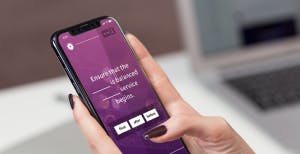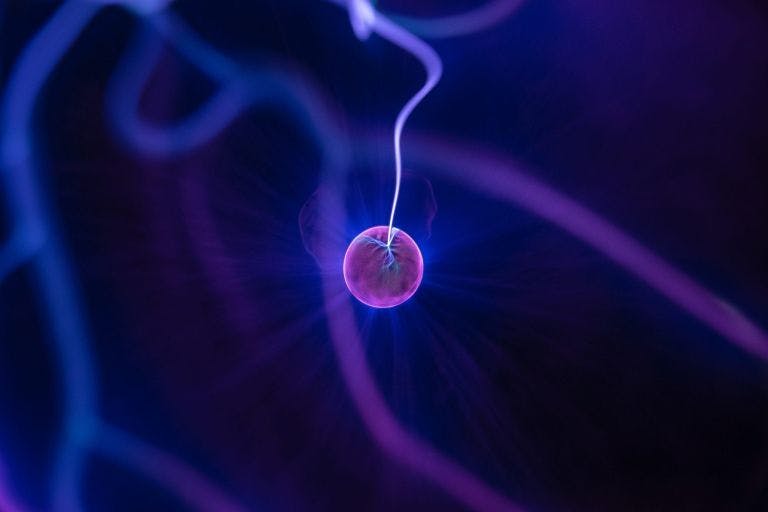Retaining information

10 ways to make learners better at retaining information
Learning and Development professionals are all too aware that getting unwilling learners – especially busy adults in a company training environment – to take new information on board is a fraught task. Whether you’re corralling grumpy workers into a room to be talked at for a day, or sitting them down in front of an out-of-date, clunky, eLearning course, the chances are that your messaging will go in one ear and out of the other. But there are solutions. Here are ten ways to retain information better.
Why do I forget things instantly?
There are several reasons why people forget things, seemingly instantly. Decay theory is one cause of why people forget information and suggests that over time, memories begin to fade and disappear.
Another theory, known as interference theory, suggests that some memories compete and interfere with other memories, especially if the newly learned material is similar to something previously learned. Sometimes, losing information has less to do with forgetting and more to do with the fact that it never made it into long-term memory in the first place. This is known as an encoding failure, which prevents information from entering long-term memory storage.

Why do I forget when I study?
Do you sometimes find yourself studying for hours on end, only to not be able to recall a single thing? There are multiple reasons why this may be happening. For one, you might be trying to overcrowd your brain with too much information, which prevents learning. Or maybe there’s interference in your memory, which means that you’re trying to learn material that interferes with other material you remember.
But the most common reason why students forget is because the material is under learned, meaning that it was never stored in long-term memory, and thus, cannot be recalled easily.
What percentage of information do we retain?
Forgetting is the nemesis of memory. Sometimes, it may appear that our brains are better at forgetting information than it is at retaining it. The phenomenon of losing information is known as the forgetting curve, which tracks how quickly memories decay over time. Within 24 hours, most have forgotten an average of 70 percent of new information, and within a week, forgetting claims an average of 90 percent of it. An easy way to fend off this natural decay is to periodically revise material.
How to read textbooks and retain information?
It may seem counterintuitive, but the worst way to retain information from your textbook is to read it. That’s because most textbooks are dry, tedious, and not all that entertaining or memorable. A better reading strategy is to read actively by highlighting and taking notes, and then reviewing the material later. This will prevent the information from decaying and help store them in long-term memory. When reviewing, it’s more effective to read over your notes than re-read the textbook.
How to study better?
There’s no shortage of study tips that aid in retaining information, backed by science and research. For one, information is more easily retained when all distractions are removed and you can fully focus on the material, which means no multitasking. It also helps if you revise often, and space out revision sessions from one another. But perhaps the best way to study is to be an active participant. This means highlighting, taking notes, and engaging with the material instead of just trying to memorize it.
How to retain information
• Chunking
Human short-term memory can only retain 3-5 pieces of information before it gets overwritten or pushed out and replaced by new information. Consequently, deluging learners with volumes of new facts is a futile exercise, especially if they don’t literally want to be learning it. However, by breaking information into easily-digestible chunks, there’s a much greater likelihood that information will be successfully transferred to long-term memory. It’s the principle behind why this 11-digit phone number 04735559872 is hard to memorize but when broken into three chunks 0473 555 9872 it becomes much more manageable. You can read more about chunking strategy, here.
• Microlearning
A step up from chunking is microlearning. This, like chunking, breaks down any complex topics into just a few, easily-absorbed, bite-sized pieces. A course could focus on complex trade issues between Singapore and Malaysia but by splitting the subject matter into key, relevant, individual topical lessons, it becomes easier to digest: one for each of the countries plus one for trade in general (for context) and then others for addressing the core messaging. That would be far more effective than sitting through an hour-long course that had everything bundled together. More commonly, microlearning will comprise of lessons on how to perform a certain task, a new company policy or about how to sell a product to a customer. It’s an excellent method of retaining information.
• Reinforcement
A key element of microlearning is reinforcement. Once knowledge transfer has occurred it’s important to verify that the learner has understood it. Asking questions is a great way of doing this and, if only a short topic was covered, it would be far more likely that a learner will answer them all and they’ll all be correct. If the answer is wrong, then the correct answer needs to be reinforced quickly lest the learner walks away remembering the wrong thing. This is covered more in our post on how to create a micro lesson plan.
• Interactivity and retaining information
Traditional transmissive or rote learning is notoriously ineffective: people who remember everything they hear are rare creatures indeed. Better learning can be achieved by making learning interactive. This is simple with microlearning as small lessons can be embedded within interactive templates so that a typical true or false question (for instance) can suddenly become interactive and engaging.
• Gamification
A step on from interactivity is gamification. Making a lesson gamified – by giving points for correct answers or fastest completion times – stops learning feel like learning. With a fully-engaged learner, knowledge transfer is dramatically more successful.

• Peer learning
L&D experts state that as much as one-third of training should come from peers. It’s not hard to see why. Your own employees are most likely to know their own job better than any isolated, instructional designer at a third-party course-authoring firm. Whether it’s a machine operator who knows all the foibles of a production process or a sales person who knows best how to deal with certain types of clients, embracing this expertise doesn’t just create more engaging lessons that other employees can relate to better, it makes the teaching employees feel more valued and loyal.
• Spaced repetition
Though it’s fundamentally an ancient technique, spaced repetition came to the fore in the 20 Century. By repeating the learning at increasing intervals, knowledge becomes ingrained and far less likely to be forgotten. It’s a great partner to microlearning as performing a microlesson repeatedly is far less of a chore than performing an entire eLearning course.
• Just in time training (JITT)
Microlearning is a great enabler of training on demand – what L&D professionals call just-in-time training. It’s the opposite of typical training where a learner is deluged with information (much of which is superfluous) just in case it’s ever needed. By dialling up a microlesson right before it’s needed a learner can be briefed just minutes before they require the information.
• Retaining information better through individual pacing
Not everybody is the same when it comes to learning. Some pick things up quickly, others slowly. If you have a group of learners learning together, fast learners will get bored and disengage while slower learners will get confused. It’s far more effective to allow people to learn at their own pace. At Ed, we’ve found that the most effective way of doing this is sending learners lessons to their own smartphones so that they can complete them in their own time at their own pace.
• Relevance
It may seem obvious, but training with relevant information is a huge issue for L&D professionals. Typical workflows involve creating or purchasing courseware that’s been created by a distant, third-party using a complex authoring tool before being fed into a Learning Management System (LMS) so that a learner can interact with it. The problem is that this course creation process typically takes weeks, is often created by someone who is neither a stakeholder in the company nor has any feedback regarding the course’s effectiveness and updating it is an expensive, convoluted nightmare. If, on the other hand, a rapid authoring tool (that was integrated into a template-focused mobile LMS) is used, a microlesson can be created (by anyone) in the morning and distributed to learners’ own mobile devices, via the cloud, in the afternoon. No more referencing case studies that happened many years ago – you can reference last night’s news! This makes lessons far more engaging, relevant and better for retaining information.
You may be interested in our article on instructional strategies!
How to retain information better with EdApp
The above factors are all cornerstones of Ed Microlearning. If you’d like to know more on how to retain information better, get in touch at enquiries@edapp.com. You can also try EdApp’s Mobile LMS and authoring tool for free by signing up here.
[wpipa id=”815″]
Curated course examples
Author
Guest Author Daniel Brown
Daniel Brown is a senior technical editor and writer that has worked in the education and technology sectors for two decades. Their background experience includes curriculum development and course book creation.
